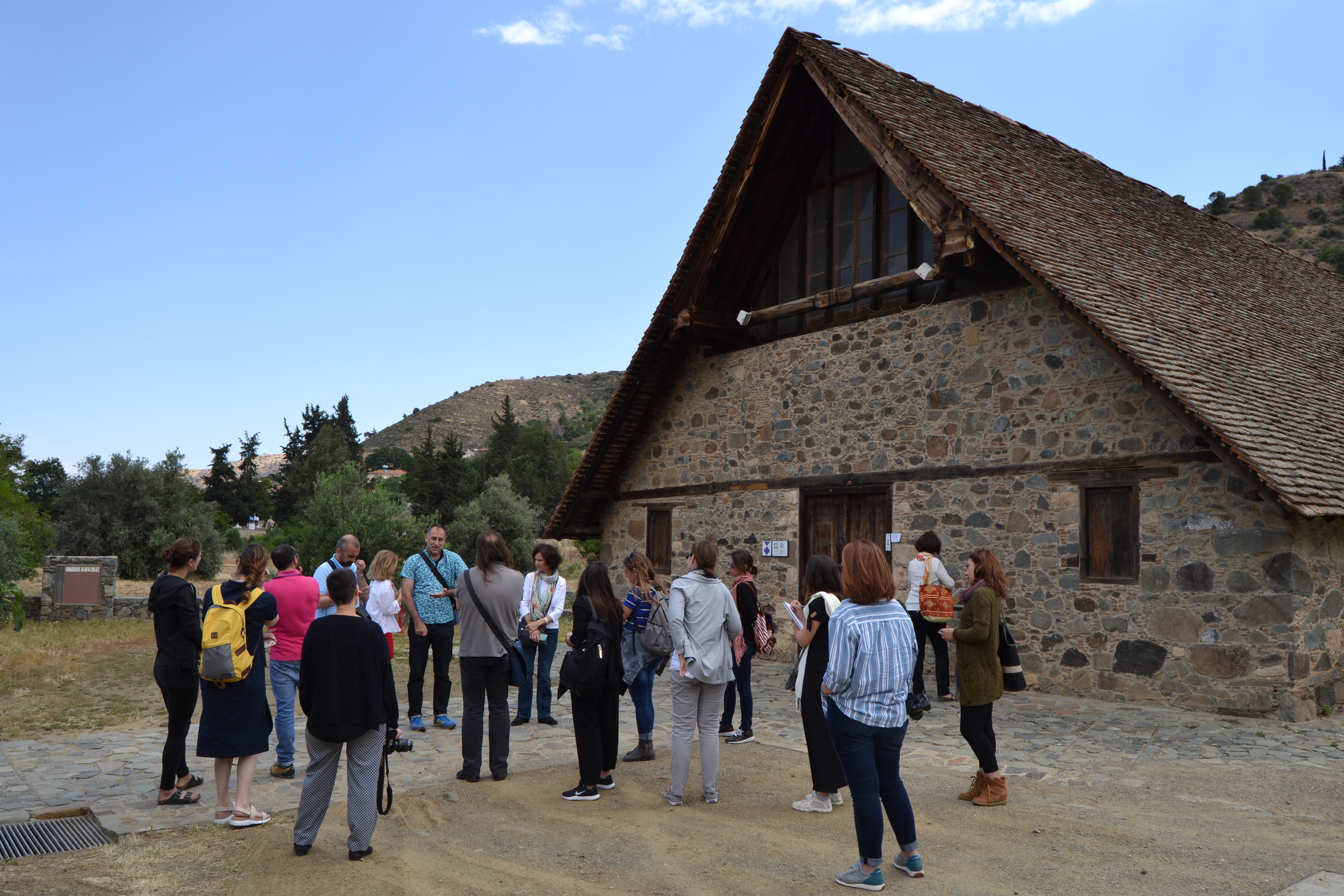Workshop 1
Workshop I
Representation: Art and Architecture in Contested Urban Landscapes
Location: Nicosia, Cyprus. 9-day meeting, 7-16 May 2018
As the project’s first workshop, engaging both the Advisory Board and the group participants, our focus concentrated on the thorough introduction of the research theme and the effective integration of contributing participants’ interests and research. This workshop established group cohesion and set the tone for the constructive exchange of ideas and collaborative work. The schedule combined seminar discussions of key concepts from the readings (spatial scale, the arts as a cultural resource, memory, authenticity, contestation, visualization, reception, heritage and identity) with focused site visits, beginning with Nicosia and continuing to other key sites in Cyprus. The historic capital of the island, with its physical division between the Greek Cypriot South and the Turkish Cypriot North, is an ideal starting point for the group’s exploration of the ways that art and architecture are perceived, represented and experienced in contemporary contested urban landscapes. Cyprus reminds us constantly of the tension of medieval history and heritage as experienced in the contemporary moment.
Nicosia
Concepts: art and architecture in historically contested landscapes, divided historical cities and divided stewardship, conversion of medieval architecture and cultural identity.
Venue: The workshop convened at the Aglantzia campus of The Cyprus Institute in Nicosia. Dedicated seminar rooms and visualization labs fully equipped to support such academic meetings accommodated the preliminary meetings of the workshop and the project itself. Participants stayed in the historic center of Nicosia and shuttled between the hotel and The Cyprus Institute by mini-bus.
Program:
Days 1 and 2 were dedicated to presentations by the coordinators and the Advisors of the project. Participants provided ten-minute presentations about their research and objectives for their participation in the project. We also engaged the collaborative work of digital humanities, digital heritage and visualization experts from The Cyprus Institute and NCSA in Nicosia and the recently studied area of the Venetian Paphos Gate, which we visited on Day 2. Seminar discussions, group meals and an initial walking visit through the center of Nicosia (south and north sides) will help build group cohesion and identity.
Day 3 was dedicated to fieldwork in the historic city of Nicosia with a particular focus on issues of artistic and architectural heritage in the context of the city’s dividing “Green Line.” Starting at the top of the Shiakolas tower, from where the entire city and its topography can be viewed, we then walked through the area of the Virgin Phaneromeni square before visiting the Omerie mosque, hammam, house of Hadjigeorgakis Kornesios, Cathedral, Archbishopric and Pancyprian Gymnasium; and then the rehabilitated Chrysaliniotissa neighborhood; and finally ending at the Venetian Famagusta gate and the walls of the city.
Day 4 started with a walk across the desolate space of the buffer zone which since 1974 has separated the two sides of the city. As the de facto division of Nicosia, it physically separates the urban space but not the city’s shared history. This followed by a visit to the Leventis Municipal Museum, which effectively narrates the city’s history. The museum holds an impressive collection of works of art, maps, daily life objects and artifacts spanning the medieval through the modern periods of the city’s history.
On Day 5 we crossed to the north part of the city to look at the Gothic Cathedral of Hagia Sophia (now the Selimiye Mosque), the church of St. Catherine, Great Han, hammam, Lapidary Museum, Keryneia gate and the Arabahmet neighborhood.
Troodos mountain, Limassol, and Famagusta
Concepts: medieval art and architecture as a social resource, heritage and arts tourism, historic preservation in the context of contemporary politics.
Program: On Day 6 we visited the Troodos mountain region to examine some 11th-15th-century Byzantine churches (named UNESCO World Heritage in 1985) that together comprise one of the Byzantine Empire’s largest groups of churches and monasteries. We will look at their remarkably well-preserved wall paintings, examining them in the context of the island’s medieval history and the transformation of its historic landscapes. The city of Paphos, inscribed in the UNESCO list of world heritage sites (1980) on the basis of its history, which extends from the Neolithic through the Roman period, reveals how rapid touristic development both endangers and dictates the representation of ancient heritage.
On Day 7, Famagusta presents an open-air museum of Gothic and early Renaissance art and architecture challenged by the development of the contemporary city beyond the medieval walls as well as by the presence of the decaying area of Varosia, Famagusta’s seaside suburb, now stuck in the abandoned buffer zone. The city thus reveals how the preservation or neglect of historic architecture is a conscious act with powerful social and economic consequences. We return to Nicosia late that evening.
On Day 8 we drove along the coast to archaeological sites such as the ancient temple of Aphrodite, the Kouklia Venetian manor, the Crusader sugar factories at Stavros and the castle of Kolossi, discussing them in the framework of the island’s medieval cultural and economic history and contemporary touristic development.
On Day 9 in Nicosia, the seminar discussions on the final day of the workshop engaged with the readings, now illuminated by the series of case studies that the workshop has examined. The workshop concluded by defining the key themes and setting goals for the project’s second workshop.

